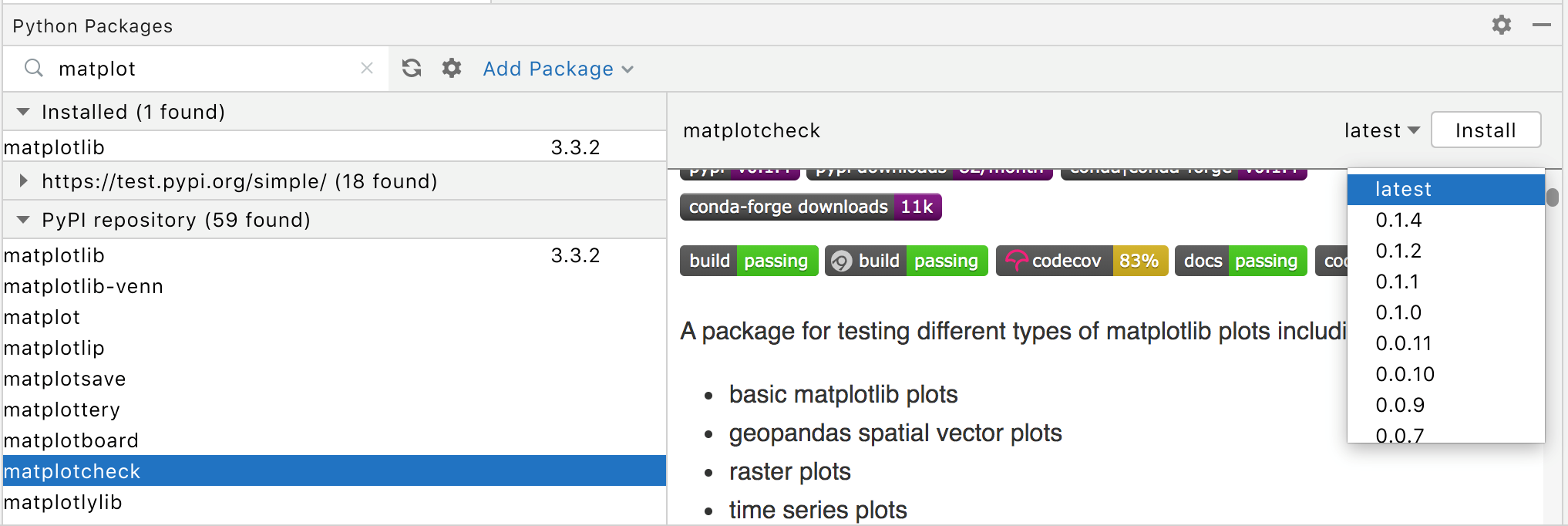

If you prefer to create the environement in a specific directory, you may use the following command. By default (i.e., if you don't specify a directory using the "-prefix" argument in the above command), custom environments will be placed at This will create a custom environment entitled "my_env". This can be accomplished using the following command:
#CONDA INSTALL PACKAGE LOCAL SOFTWARE#
In order to ensure that there is no conflict between the software you'd like to install and existing programs (e.g., dependency version conflicts), it's best to create a custom Anaconda environment. First load the appropriate module (either Anaconda2 or Anaconda3, depending on which version of Python is desired): The easiest way to install many software packages is by using the Anaconda package manager. Alternatively, you may install the program locally in your home or project directory. This may be preferable if the program is widely used and likely to be of interest to multiple users.Ģ. You are welcome to submit a ticket and ask the HPC support staff to install the software package. R CMD INSTALL -library=~/local/R_libs/ ggplot2_2.0.0.tar.When HPC users have need of software that is not currently installed on SeaWulf, there are two basic approaches that can be taken to get the programs installed:ġ. If we do not specify the path, installation will fail since by default the the package will be installed in root directory which you do not have access to.

Run the command below to install the package to a specific directory. You can also copy the compressed file to the directory, if you have the file on your local machine or somewhere else in server.
#CONDA INSTALL PACKAGE LOCAL DOWNLOAD#
Since we know the URL, the command wget can be used to download the. It is helpful to create a new directory and move to this directory for R package installation. In this section, we use ggplot2 2.0.0 as example. If the R package is not available on CRAN or you want to install an old version of packages, you can download the compressed file to your home directory and install it. Install R package from Release Binaries (without CRAN) It is important to note that library by default only loads packages from root directory, so we have to specify location of the package whenever we try to include a package installed in our home directory as shown below. To use the package from R, we call the function library. install.packages("remeta", repos="", lib="~/local/R_libs/")

(3) Destination for the installed package, which, in this case, is the directory we just created “~/local/R_libs”. Most R packages including “rmeta” are available on “” which is also known as CRAN. (2) URL for the repository where we can obtain the package. There are three required parameters for “install.packages” function. To load R and run R console on BBC/Xanadu, enter: module load R/3.3.1Īpply function “install.packages” in the R console to download and install desired package. You are able to see all versions of R available R on server.įor this tutorial, we will use R/3.3.1. A list of available module will pop up as shown below. To check the latest version on server, use the command module avail. Load latest version of R available on server. It is helpful to create a new directory for R package installation. Python packages can also be installed using conda command which comes with Anaconda or miniconda packages detailed instructions are given here To exit python console, call command exit() The command should return 1.0.4 as shown below:

To check version number type: print alfpy._version_ This command will load package alfpy we just installed. First, enter python in command line to access python console (all commands are for Python2): import alfpy We can test if the package has been successfully installed in Python. Where the number after = is version number of the package you wish to install. Then begin installation by entering: pip install -user alfpy=1.0.4 we first need to make sure current version of the package is uninstalled (note that flag “–user” is not required to uninstall). Try to install an older version if you encounter this issue. Sometimes the latest version of a package is not compatible with the latest Python version in BBC/Xanadu or some features you need only exist in a certain version. Note that flag -user is required because pip by default will install packages in root packages directory where most of users do not have permission to make changes.


 0 kommentar(er)
0 kommentar(er)
